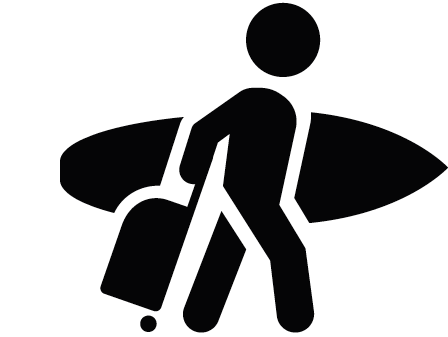Surfing in Iceland

Iceland is located in the North Atlantic Ocean and has come out as a destination for adventurous surfers. As the name of the country says, surfing in Iceland can be very cold. The island is very exposed to any swell direction and has lots of set-ups that can generate world-class waves but surfing epic waves requires a lot of traveling and studying the forecast. Not everyone is willing to wear a wetsuit and paddle out in negative temperatures but when you score the perfect conditions you will have a blast that you will never forget. The coast of Iceland is extremely exotic and driving to the surf breaks is already an experience by itself. The land of the fire and ice as the island is known have surf spots surrounded by glaciers and volcanoes making it a unique scenery. The surf community of the island is small but tight and even though being a surfer in this environment can be hard there is a new generation that is evolving and pushing the boundaries of the sport. There are a few surf schools that provide surfboard rental and guidance that can help you a lot during your stay. Besides surfing Iceland offers solitude, an interesting culture and friendly people. This will be nothing like any of your previous surf trips and be prepared because the adventure is around every corner of this majestic island.
Climate in Iceland
As the name implies the climate in Iceland is cold, windy and cloudy. The country receives cold winds from the north pole but is also tempered by the ocean and the gulf stream that flows in it. There is not much variation of temperature between the day and night or from one season to the other. The north coast of the country is colder than the rest of the island. The average temperature in summer is 12°C (53°F) and days are extremely long with almost no dark hours. Winter is not as cold as imagined with average temperature around 0°C (32°F). Although there are waves all year round the best time to surf is between October and March when storms hit the island from all directions. Winter has bigger waves but summer has the advantage of prolong daylight and warmer weather. The water temperatures are cold throughout the whole year so make sure you bring the right gear. Average sea temperature in winter is 4°C (39°F) and a 5/6 wetsuit is recommended plus booties, gloves and a hood. During summer the sea temperature is slightly higher averaging 8°C (46°F).
Best surf spots in Iceland
The main surfing area in the island is located around the Reykjanes Peninsula. This is located less than an hour from the capital Reykjavik but the stunning scenery makes you feel as if you traveled back in time. Most of the waves here break on top of a sharp volcanic reef with the exception of Sandvik which is a good spot for beginners. The mais surf spots are Thorli, Grotta, Gardur, The Rock, Grindavik, Rolling Stones, Ollie’s Shipwreck, Hafnarskeich and Kirkjusandur.
Budget Planning
Meal price range
Simple meals start at $13 USD. Mid-rang meals start at $20 USD. Dining & drinking at high-end restaurants can cost anywhere from $50-150 USD
Equipment rental
There are a few places where you can rent gear. Boards start at $55 USD a day
Prepaid SIM cards
Síminn is a good choice. SIM cards can be purchased from kiosks, malls, gas stations, and grocery stores. Prepaid packages start at $20 USD.
Public transport
Four bus companies provide regular long-distance services around Iceland, but they can be expensive.
Rental cars start at $50 USD a day.
Gas prices
$1.72 USD a liter.
Types of risks
Earthquakes and volcanic activity
How to prepare
Visa
Citizens from 62 countries, including the US, and Australia, can enter Iceland without a visa for up to 90 days.
Vaccines
Although it's not mandatory, it’s recommended that you have been vaccinated for hepatitis A & B, yellow fever, typhoid, rabies, meningitis, polio, Tdap, chickenpox, shingles, pneumonia, influenza, measles, mumps and rubella.
Things to know
Language & Currency
Icelandic is the official language. English is taught as a second language in Iceland, so you can get by with English very easily.
Icelandic króna (kr or ISK)
Best time to go
There are waves all year round but the best time to surf is between October and March when storms hit the island from all directions.
Checking Surf forecast
Checking the forecast about a week before your trip is always a good idea. Understanding what the waves will be like and knowing what gear to pack is essential. You can check the forecast for the waves here.
Do I need pack a pharmacy kit
You should bring a basic kit. Including ear drops, eye drops, bandaids, ear plugs, gaze, alcohol, and broad spectrum antibiotic ointment.
Travel/Surf Insurance
World Nomads has great travel insurance packages that are not super expensive and they cover surfing.
Emergency
Dial 112
Check surf pictures of Iceland at #surfingiceland.

